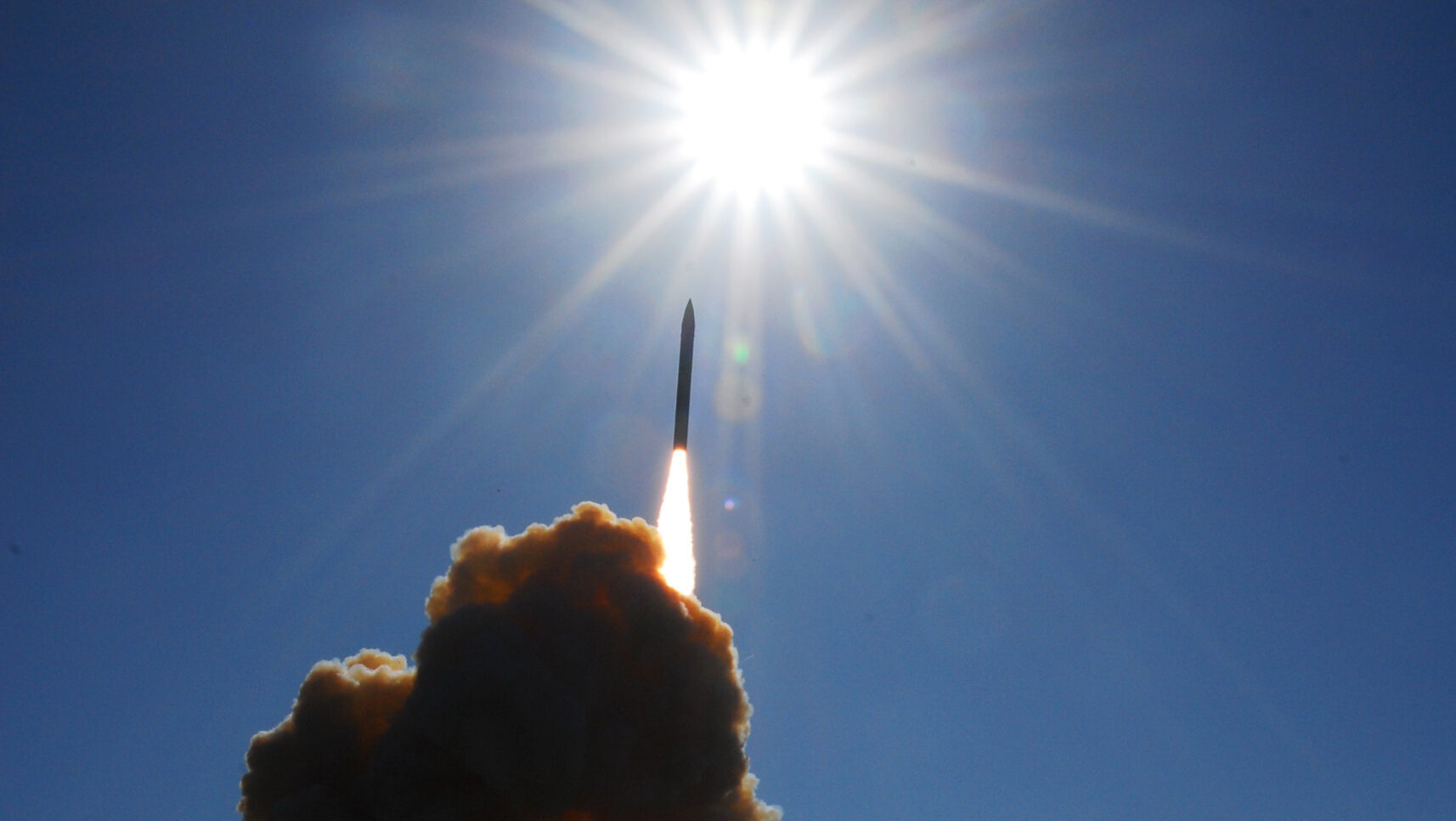
A ground-based interceptor lifts off from Vandenberg Air Force Base. The launch, designated FTG-05, was a test of the Ground-based Midcourse Defense element of the Ballistic Missile Defense System. The missile successfully intercepted a long-range target launched from Kodiak, Alaska. (DVIDS)
WASHINGTON — Pentagon space policy czar John Plumb recently made clear his intentions to hold the Missile Defense Agency to a rigorous standard of testing for its Next Generation Interceptor — calling past Defense Department allergy to missile testing “ridiculous.”
“I think fundamentally … as a department, as a country, we have not tested things enough or we don’t build enough tests into our programs,” Plumb told the Center for International and Security Studies (CSIS) on Friday.
He explained that DoD has created “system that somehow is averse to missile tests or testing of equipment,” noting that one reason could be concern that if something fails, Congress will axe funds.
“It’s so ridiculous,” he said. “You test things because they might not work, and you learn from every test. And if you fly another one, yes, it costs money, but that’s how you get the capability that actually works and you can rely on a conflict.”
Specifically with regard to NGI, Plumb noted that he is not an acquisition authority, so has no power over a future decision on how many interceptors to buy. But he nonetheless emphasized the need for rigorous testing of the new interceptor before any plans to expand the effort were set in stone.
“I would say the United States should prove to ourselves that we can shoot something down before we buy more of a thing,” he said. “So, fly before you buy, if fly includes shooting a missile down to prove that it works.”
MDA currently plans to buy 20 NGIs starting in 2028 to augment the current Ground-Based Interceptors (GBIs) making up MDA’s Ground-Based Midcourse Defense program designed to defend the US homeland from “rogue” North Korean or Iranian ICBM attacks. The agency’s fiscal 2023 budget request asked Congress for $2.8 billion for GMD to improve “performance, reliability, availability, and cybersecurity resiliency,” including an unspecified amount for NGI. For the NGI contest, Northrop Grumman is partnered with Raytheon Technologies, going up against the team of Lockheed Martin and Aerojet Rocketdyne.
There are currently 44 GBIs housed in underground silos at Fort Greely, Alaska and Vandenberg SFB, Calif., but the MDA is working to expand that number to 64. The Senate, in its version of the fiscal 2023 National Defense Authorization Act, calls upon the Secretary of Defense to draft a plan as part of its FY24 budget request to replace the entire GBI fleet with the NGI. (The Senate has yet to pass the FY23 NDAA; then the legislation must be reconciled with the House version before becoming law.)
The NGI development effort was launched in 2019, after DoD abruptly canceled its multi-billion, problem-riddled Redesigned Kill Vehicle program to develop a replacement for the Exo-Atmospheric Kill Vehicle — the payload atop the GBI booster that is designed to smash into an incoming ballistic missile. The Exo-Atmospheric Kill Vehicle, which remains in current use, itself has come under criticism for its spotty test record over the past two decades.
“I am hopeful that we will apply those lessons to NGI,” Plumb said. “Not that I’m the decision [maker] on it, but my input will be: ‘Let’s prove this thing works’.”





















